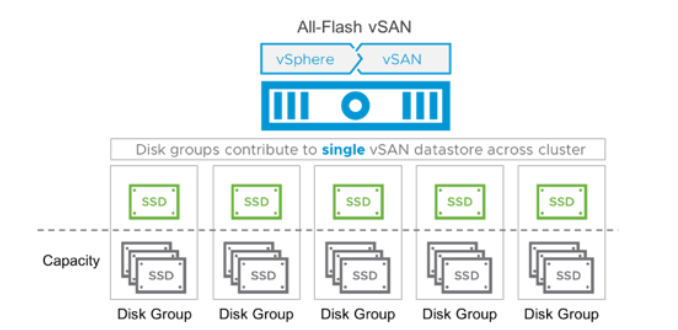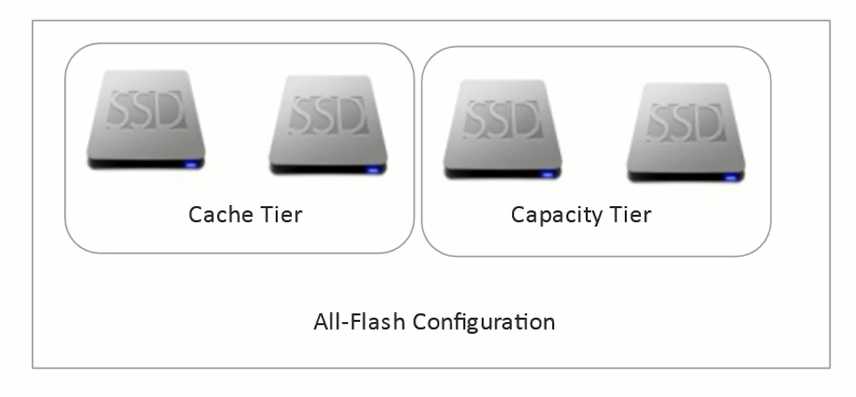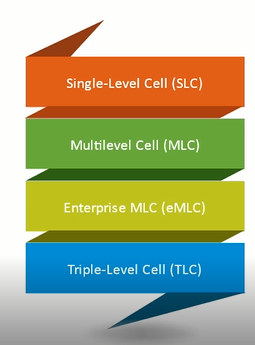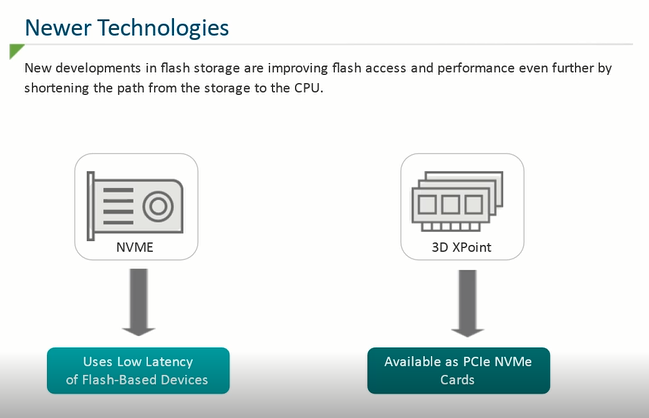
As we are aware that VMware has released its eighth generation of vSAN, version 6.7 Update 1 (vSAN 6.7 U1), which makes it even easier to adopt HCI and build a Digital Foundation. Virtual SAN allows the flexibility to build your own configuration based on a given vendors hardware platform, allowing one to greatly differentiate the performance of Virtual SAN clusters based on your choices.
vSAN Runs on standard x86 servers from more than 15 OEMs and the deployment options include integrated systems such as Dell EMC VxRail or, Dell EMC VxRack SDDC systems. A great fit for large and small deployments with options ranging from a 2-node cluster for small implementations to multiple clusters each with as many as 64 nodes.
vSAN configuration is available in Hybrid and All-flash mode , vSAN hosts that contribute storage can be configured with between one (1) and five (5) Disk Groups for the storage of vSAN components. Disk Groups have the requirement of a single flash device used for Cache, and between one (1) and seven (7) devices for Capacity. And in All-Flash configurations, the capacity devices may be flash SATA, SAS, PCIe, or NVMe.

Virtual SAN utilizes Solid State Drives (SSDs) as both a write buffer and read-cache to accelerate the performance of the platform. Solid State Drives (SSD) are devices that store persistent data on solid-state NAND flash modules. Virtual SAN supported SSDs can utilize one of three common interfaces, either SATA, SAS, or PCIe.

As you look at different SSDs, you may notice SSD vendors will categorize their components as either single-level cell (SLC), multi-level cell (MLC) or enterprise multi-level cell (eMLC) NAND. NAND flash modules are the non-volatile storage components that comprise SSDs.
Let’s check the Supported different types of SSD drives

Single level cell, also called SLC, has the advantage of being the most accurate when reading or writing data. Besides, it has the longest life span over any other type of flash memory. In SLC, each cell can store a single bit 0 or 1 of information and the general lifespan of NAND flash devices for SLC is 100,000 write cycles. This type of flash memory has done exceptionally well in the enterprise because of its life span, accuracy, and overall performance. It is not so common in home computers with this type of NAND due to its high cost and low storage capacities. It is mostly used in industrial use and workloads that require heavy reading/writing cycles such as servers.
Pros:
Cons:
In MLC, NAND flash uses multiple levels per cell to allow more bits to be stored AN MLC can usually have four values: 00 , 01, 10 and 11.MLC is cheaper than SLC by typically has a shortened life span. Because MLC uses the same number of transistors as SLC, a higher risk of errors exists. The general lifespan of NAND flash devices for MLC is 3,000 to 10,000 write cycles.
Multiple Level Cell, short for MLC, stores 2 bits of data on one cell. The advantage is to lower the cost of manufacturing. As we all know, the cost in flash memory production is generally passed onto the consumer in the end. It is used for everyday consumer use, gamers, etc.
Cons:
Cons:
To reduce the risk of errors associated with SLC or MLC, another type of NAND flash called eMLC has been designed. eMLC is a compromise between the cost and lifespan of SLC and MLC. The general lifespan of NAND flash device for eMLC is 20,000 to 30,000write cycles.
Enterprise Multi-Level Cell is a hardier version of MLC NAND flash that somewhat bridges the performance and endurance gap between SLC and MLC. eMLC drives cost more than MLC drives, but much less than SLC their counterparts. Although it still stores two bits per cell, an eMLC drive’s controller manages data placement, wear leveling and other storage operations in a way that extends an eMLC SSD’s useful life.
A primary focus of eMLC vendors is to further improve write endurance and make MLC flash as reliable and long-lived as SLC flash. There are a number of techniques that vendors are using to improve write endurance, including:
Pros:
Cons:
Triple Level Cell store three bits in each cell. By storing more bits per cell, a TLC memory card achieves slower transfer speed, higher error rates, and lower cell endurance than both SLC and MLC. The general lifespan of NAND flash device is 1000 write cycles.
The advantage of TLC memory is that the memory chip is physically smaller than SLC and MLC chips for given memory capacity.
TLC memory chip requires less power to operate than MLC memory and is cheaper to produce. TLC flash technology is used mostly in low-end memory device where speed and reliability are not important
Pros:
Lower production cost leads to a cheaper SSD choice in SSD market.
Cons:
The life span of TLC is much shorter than that of SLC and MLC.
The read/write speed is the slowest among all-flash types.
QLC memory is 64-layer and each cell on QLC can store four bits of information, compared to Triple-Level Cell’s three (TLC), Multi-Level Cell’s two (MLC), and Single-Level Cell’s one (SLC). Besides, the write cycle of QLC could reach 1000 times, which is equal even better than TLC and the price of QLC is lower than that of TLC at the same time. This can be used If there is a heavy demand for data storage and do not save much data in the computer or low budget on SSD.
Pros:
Writing and accessing can be processed by fewer driver software than the other 3 types of NAND flash memory.
More storage capacity, higher storage density, and lower price.
Cons:
The performance and life span of QLC is so good as SLC or MLC but is nearly equal to TLC.
Want to make SSD with QLC flash memory to be the data storage disk.
NVME and 3Dxpomt are new technologies which are giving better performance than SAS / SATA SSD’s, we will explain this in another article.

In this article, we have discussed commonly used different SSD drive types in VMware vSAN, and use case where we can use these drives.You have to choose the SSD’d as per the real requirement achieve the benefits of using these drives in HCI solutions .